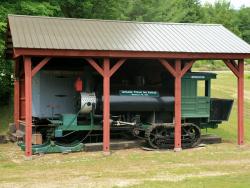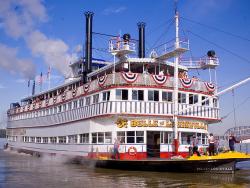The U.S.S. Texas is the last surviving warship of its kind--powered by reciprocating steam engines. It was built during a period in which naval authorities were switching to the newly-developed steam turbine for propulsion, but were unsure of its suitability. Only one more warship, the New York, commissioned one month after the Texas, was to be powered by the reciprocating engines.
1910-1919

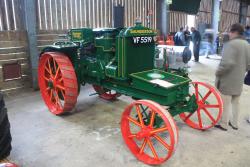
The Rumely Companies, which operated in La Porte, Indiana, from 1853 to 1931, produced a variety of equipment including threshers and steam engines, which helped to change the nature of American and world agriculture. The revolutionary OilPull Tractor, which was introduced in 1910, used a unique carburetion system developed by John Secor, the Company's Chief Engineer. The OilPull tractor efficiently converted a low cost petroleum product to mechanical power, greatly reducing the need for animal and steam power on American farms. Dr.
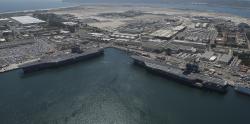
Known as the birthplace of Naval Aviation, North Island was the site of the first successful seaplane flight and the first amphibious flight in the U.S., both made by Glenn Curtiss. The first Naval pilot, Lt. T.G. Ellyson, was trained here at the Curtiss Aviation Camp. A flight school established here by Ellyson trained the next Naval aviators as well as the Navy’s first aviation maintenance personnel. North Island was also the site of the first night flight, and the home of the first aircraft carrier, the USS Langley.
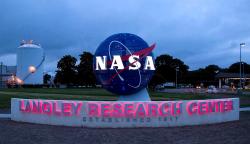
The Langley Memorial Aeronautical Laboratory, now the core of the Langley Research Center, was a unique facility that served as the nexus of aerodynamic research in the U.S. from its beginning in 1917 to its transformation into NASA’s Langley Research Center in 1958. It achieved world renown for its variety of specialized research tools and its staff’s emphasis on practical solutions to the problems of flight.
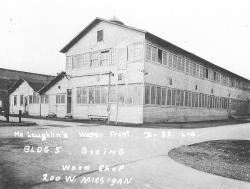
This former shipyard was the first home of the The Boeing Company, founded in 1916. Affectionately called the Red Barn, this structure was built in 1909, and became the historic birthplace of Boeing aircraft production. Starting with the Boeing Model C, all early Boeing production took place in this building. Here, the entrepreneurial spirit of William E.
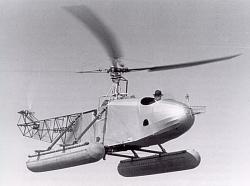
Igor I. Sikorsky, engineering manager of the Vought – Sikorsky Division of the former United Aircraft Corporation, used the Stratford, Conn., sites to design, build, and test his innovative helicopter designs. Sikorsky’s VS-300 model helicopter was the world’s first design which used the now industry-standard single main rotor with an auxiliary anti-torque tail rotor.
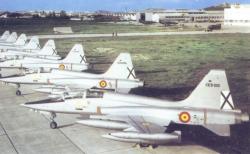
Getafe Airfield was the site of the world’s first successful rotorcraft flight, on January 17, 1923. Lieutenant Alejandro Gómez Spencer piloted a C.4 Autogiro designed and built by Juan de la Cierva, who tested a series of autogiros between 1920 and 1924 at the Getafe site. Cierva’s autogiros introduced important technologies and flight techniques that led to the development of helicopters and other rotary wing aircraft.
The confluence of the Mohawk and Hudson rivers was the site of distinct advances in transportation of the early 19th Century. The Erie Canal in 1825 and the Mohawk and Hudson Railroad in 1831 were both of national significance.

Spearheaded by Chief Engineer William J. Wilgus and constructed under challenging conditions with no interruption of existing train service, Grand Central Terminal was a triumph of innovative engineering in the design of urban transportation centers. Its novel, two-level station, made possible by electric traction, streamlined both train and passenger movement by separating long-haul and suburban traffic and employing an extensive system of pedestrian ramps throughout the facility.
The big Allis-Chalmers triple-expansion engine is dead, but not to Walter Wilson and Daniel Hoffman. These men are, respectively, division foreman and manager of pumping and maintenance for New Jersey’s Hackensack Water Company; but back in the 1940s they were just starting there as two young engineers fresh out of the Navy, and the engine was very much alive. In fact, it seemed like home to them: “When you were up at the top there,” Hoffman says, gesturing to a lofty catwalk close under the high roof of the pumping station, “and she was going, it was just like being on a ship at sea.”
Innovations
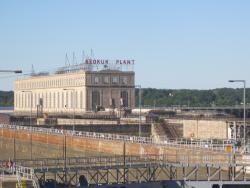
Spearheaded by Hugh Cooper, the Keokuk Dam & Power Plant served as a prototype for many future power plants. The project harnessed the hydropower of the Mississippi River, between Keokuk, Iowa and Hamilton, Illinois.
The crest of the dam is nearly a mile long. The dam structure…
Read More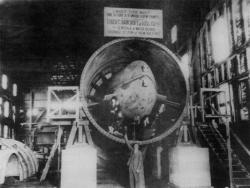

Work began in 1887 on the high-level truss "Winner Bridge" crossing the Missouri River at Kansas City. The piers were completed in 1890, but for financial reasons the project was suspended. John Alexander Low Waddell, renowned civil engineer, prepared an alternate design for a lift bridge in…
Read More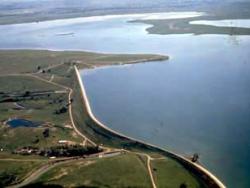
Belle Fourche, meaning "Beautiful Forks" in French, refers to the confluence of the Redwater and Belle Fourche Rivers. The gold rush to the Black Hills in 1876 brought many people to the area, but agriculture and livestock soon became the principal industries. Farmers and civic leaders…
Read More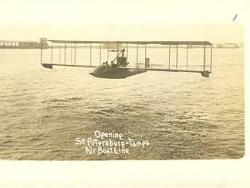
The St. Petersburg Yacht Basin was the original operating location of the St. Petersburg – Tampa Airboat Line, the nation’s first, regularly-scheduled commercial airline. The line’s inaugural flight was on January 1, 1914, with two daily, round-trip flights between St. Petersburg, Fla., and…
Read More
By the 1890s, the transportation infrastructure of downtown Boston - a maze of narrow, winding streets laid out, in some cases, along Colonial cow paths - proved completely inadequate for the needs of a modern, bustling metropolis. Tremont Street, the city's main thoroughfare, was regularly…
Read More
In its infancy, Hangar Nine housed Curtiss JN-4s ("Jennys") like the one Charles Lindbergh landed there when he reported for duty as a flying cadet in 1924.
As the U.S. was preparing to enter World War I, the Army raced to build an entire airfield, complete with 16 wooden hangars,…
Read More
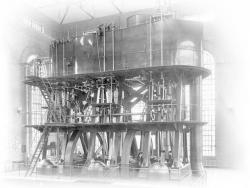
At the site of the first water pumping station providing water and sewage systems to the City of Erie in 1868, the Chestnut Street Pumping Station houses one of the largest steam engines, which pumped 20 million gallons a day. The triple-expansion steam reciprocating engine, which pumped water…
Read More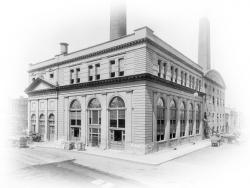
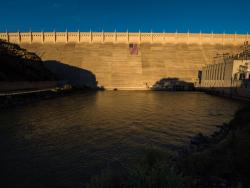
One of the first major efforts to increase farming and encourage habitation in the arid regions of the western United States, the Rio Grande Project was designed to provide reliable irrigation as well as resolve a dispute over water supply with the Republic of Mexico. The project's centerpiece…
Read More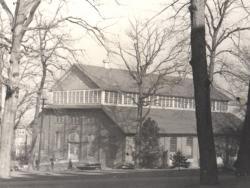
In 1907, John Fritz, known as the "Father of the Steel Industry in the United States," rejoined the Lehigh University Board of Trustees after an absence of a decade. He began the development of what would prove to be his greatest gift to Lehigh: a modern engineering laboratory and funding for…
Read More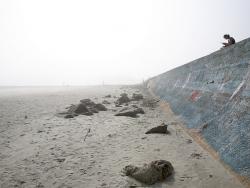
Galveston Island is a barrier island located two miles off the Texas coast. The island is about 3 miles wide at its widest and about 28 miles long. The Galveston Seawall extends over 10 miles along Galveston's oceanfront, protecting life and property against hurricanes and tropical storms. …
Read More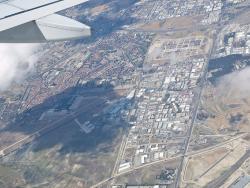
Getafe Airfield was the site of the world’s first successful rotorcraft flight, on January 17, 1923. Lieutenant Alejandro Gómez Spencer piloted a C.4 Autogiro designed and built by Juan de la Cierva, who tested a series of autogiros between 1920 and 1924 at the Getafe site. Cierva’s autogiros…
Read More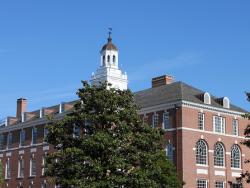
Gilman Hall, built in 1916-1917, accommodated a growing College of Chemistry by providing expanded research and teaching facilities for faculty and students specializing in physical, inorganic and nuclear chemistry. Work performed at Gilman Hall helped advance the fields of chemical…
Read More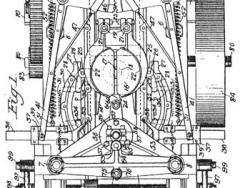
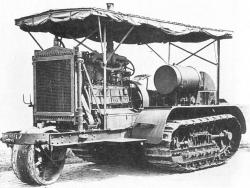
The first practical demonstration of this tractor took place in a peat field on Roberts Island on November 24, 1904, and was patented and in production by December of 1907. The existing machine represents the earliest gasoline-powered track-type tractors that were to help revolutionize…
Read More
The Charles River Basin was one of the pioneering environmental engineering projects in America. The project transformed 675 acres of unhealthy and unsightly salt marshes and tidal flats were into an environmental centerpiece for the Boston area by 1910. This was one of the first public projects…
Read More